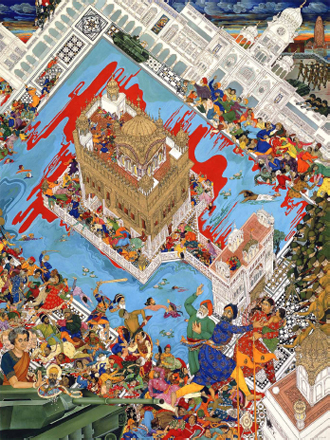Legislation of 1965
When President Lyndon Johnson signed the Immigration and Nationality Act of 1965 (the Hart-Celler Act) into law, he dramatically changed the face of the Punjabi American community. Influenced by the growing civil rights movement, the law abolished the national origins quota system established in 1924. To promote racial equality among all ethnic groups, the law allowed thousands of immigrants from all countries into the U.S. every year. The law gave preferences to families and skilled professional workers. The combination of the pioneer families with the new immigrants created a stronger and more diverse Punjabi American community.

October 3, 1965: President Lyndon Johnson visits the Statue of Liberty to sign the Immigration and Nationality Act of 1965.

President Bush meets with Sikh Americans, September 2001, to discuss issues faced by Sikh Americans after the 9-11 tragedy. Photo courtesy of The White House.

Sikhs lobbying to educate Legislature on the issue of "Mistaken Identity" and hate crimes post 9-11 (2009). Photo courtesy of Mirin Kaur Phool.

Nineteen Eighty-Four (painting by Amrit and Rabindra Kaur Singh) depicts the storming of the Golden Temple, the Sikh community's most important historic shrine, by Indian troops in 1984 (www.SinghTwins.co.uk)
Political events and human right violations in 1980's in Punjab and other parts of India caused significant migration of people from Punjab, especially Sikhs to USA (many people sought asylum in USA).

Sikhs with Assemblyman Dan Logue in the front of California Capital after the passing of Assembly Resolution 181 recognizing November 2010 as Sikh Awareness and Appreciation Month. Photo courtesy of David Essary.
